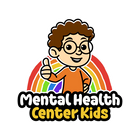A study published in the International Journal of Environmental Research and Public Health explored how teaching slow, steady breathing helps elementary school students reduce anxiety and stress.
Researchers worked with 585 children aged 7 to 12, and divided them into two groups: one learned a breathing technique (six breaths per minute), and the other did not.
The results showed that the students who learned and used slow breathing techniques experienced reduced anxiety and stress, along with better heart rate variability (HRV) — which indicates improved stress management. In contrast, the control group’s anxiety and stress increased over time.
This type of breathing pattern, taught through a biofeedback-based program, helps children manage stress. It’s an effective strategy that schools can use to support children’s mental health.
Understanding the Research
The goal of the study was to evaluate whether a biofeedback-based breathing program lowers anxiety and social stress in primary school students. The exercise involved learning to breathe slowly and steadily — about 6 breaths each minute — as a way to activate the parasympathetic nervous system.
To carry out the study, 585 students aged 7 to 12 from a public school were divided into treatment and control groups by their existing class groups. The treatment group received five individual biofeedback sessions using EmWave software, where they learned to regulate their breathing through interactive games like the Coherence Coach and Balloon Game.
These sessions were led by trained teachers and held once a week for 5 weeks.
Before the breathing program started, students in both the treatment and control groups had about the same level of anxiety. After the program:
- Those who joined the program had lower stress in their bodies (as measured by heart rate), felt less social stress, and had less anxiety after the program compared to before it started.
- When compared with the control group at post-test, the intervention group had significantly lower anxiety and social stress scores.
- The control group’s anxiety and social stress increased over time, which showed that stress usually increases, but the program helped stop this rise in the students who participated.
- Students aged 9–10 (second cycle) showed the biggest improvement in heart rate variability (HRV), which meant that their bodies handled stress better.
- All age groups had less social stress after the program. Moreover, the oldest group (third cycle) showed a big improvement in social stress.
- Overall, the program worked best for kids aged 8 and up. This may likely be due to age and maturity.
Practical Strategies for Parents and Caregivers
Children experience stress in real ways that affect their mental and physical health. Fortunately, breathing is one of the most accessible tools we have to calm the body and mind.So, how can parents, caregivers, and educators put this into practice for those in their care?
Practice breathing daily, not just during stressful moments
The children in the study practiced breathing once a week during structured sessions. This tells us that regular exposure helps build familiarity.
At home, pick a consistent time each day to practice calm breathing. Perhaps before school, after homework, or as part of your child’s bedtime routine. Keep it short and consider using calming music.
At school, teachers can incorporate brief breathing sessions into the daily schedule, such as after recess, before tests, or at the start of the school day. You don’t need special equipment — a simple script like “Breathe in slowly through your nose. Hold. Now breathe out through your mouth” is enough.
Download this Breathing Exercises (PDF) for simple and fun ideas!
Combine breathing with naming emotions
Breathing helps calm the body, and pairing it with naming emotions helps children better understand what they’re feeling, which is an important part of self-regulation.
Whenever your child seems upset, take a few slow breaths together, then ask, “Can you tell me what you’re feeling right now?” Help them name the emotion without judgment.
Create a “calm-down corner” with breathing prompts
A calm-down corner is a quiet, comforting space where children can go when they feel overwhelmed or frustrated. It’s a safe place that allows them to regulate their emotions.
Set up a small area with a comfy chair, soft pillows, and calming visuals. Include printable breathing cards, a pinwheel, or a stuffed animal they can use for “belly breathing.” You can also add a feelings chart or thermometer and a mirror so they can identify their emotions and see themselves calming down.
The authors also suggest asking about family income and parental education to see how these factors affect the program’s results.
Help your child take control of their stress with our Stress Management Worksheets and Coping Skills Worksheets.





















































